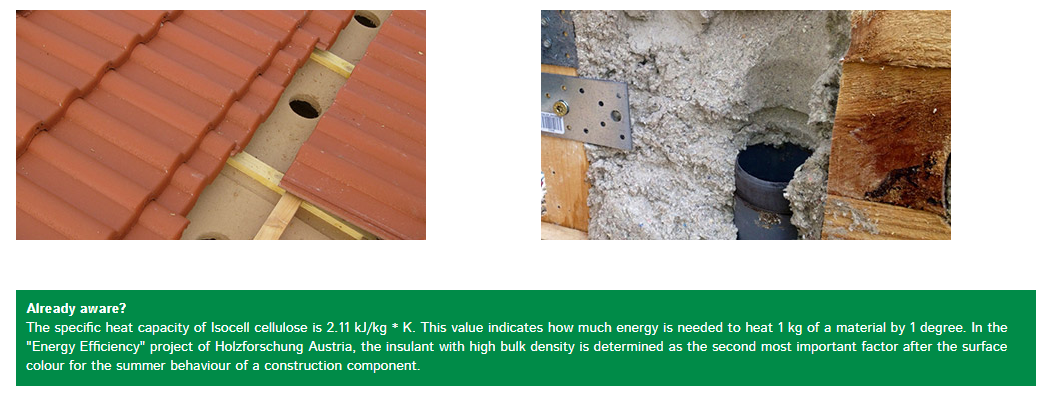Special Offers
Celllulose Insulation

CELLULOSE
NATURAL INSULATION
Cellulose - a product from nature. As the main component of plants and trees, its function is to stabilise the cell walls. Cellulose is the most abundant organic compound. Without cellulose no trees. Without trees no paper. Without paper no natural thermal insulation.
Isocell is natural thermal insulation made of cellulose fibres, which is produced by recycling clean, segregated daily newspapers. Drawing as course fibre, mixing with mineral salts and milling in a mill makes Isocell cellulose resistant to rotting and fire-resistant. Production is carried out in compliance with strict quality criteria in our own plants in Austria, Belgium, France and Sweden.

CELLULOSE

CELLULOSE
NATURALLY MOISTURE REGULATING
Isocell cellulose has a moisture-regulating effect. It is not only very water vapour permeable, it can also transport moisture in the fibre. It accomplishes this without losing its insulation qualities.
Moisture transport in the construction component works by diffusion, i.e. from warm to cold. Condensation occurs when the air temperature reaches the dew point.
Cellulose has a capillary conductivity, which means it absorbs any moisture that forms and thus acts against the direction of diffusion. As a result, cellulose becomes a valuable moisture buffer, especially if a drying out of the construction component is only possible on the room-side - such as, for example, in the case of unventilated flat roofs, interior insulation or renovation.
Isocell cellulose insulation does not accumulate mould itself and also protects adjacent parts.
Source: Dl. (FH) Michael Gomm, "Mould growth on wood and wood-work materials", diploma thesis at the University of Applied Sciences of Carinthia 2009

NATURALLY GOOD FOR THE ENVIRONMENT
A newspaper needs much less energy to become insulation than other raw materials. As such, it is part of a fascinating, natural cycle that produces a new, independent product with every metamorphosis.
In comparison to other insulation material, primary energy use is significantly less. It amounts to only 30% of glass wool and only 15% of polystyrene (styrofoam). Isocell cellulose insulation reduces CO2 emissions over decades and saves heating costs. And the best: while many building materials become a disposal problem, Isocell cellulose blooms again as it can be processed into plant fertiliser!
Carbonization (pyrolysis) produces a soil nutrient, which the Indians in the Amazon region already understood 7000 years ago.
This plant fertiliser is applied with the manure and, according to the latest findings, reduces the unpleasant smell by up to 75%! And at some point, a tree grows again and the cycle closes.

CELLULOSE
NATURALLY HIGH FIRE
PROTECTION
PROTECTION
A series of fire protection tests confirm the positive properties in the case of Isocell cellulose burning. Comparative tests show: "Non-combustible" does not actually mean "better in case of fire"! The classified superstructures of REI30 to REI 90 give security in planning.
With the EN classification B-s2,d0, Isocell cellulose achieves the best possible assessment for combustible construction materials. It has been shown in an investigation by IBS Linz * that, with a 30-cm thick cellulose layer, the underlying construction component remains protected from heat for 90 minutes.
* Source: IBS file reference 11092607a 2012



CELLULOSE


NATURALLY THE BEST
The rooms stay cool in the summer, including the under-roof areas. ISOCELL cellulose insulation provides maximum performance in heat protection, as in other aspects. And that with enormous endurance, so far without material fatigue.
Much more energy is consumed for the cooling of buildings than for their heating. The phase shifting indicates the time required for a temperature wave to reach the room side from the outside of a construction component. The larger the phase shift, the longer the heating of the building interior is prevented.
Isocell cellulose has existed for over 25 years. So far, there is no evidence that the cellulose insulation is altered by ageing.

PLEASE CONTACT US FOR OUR SUPPLY AND FIT SERVICES
Featured Products








